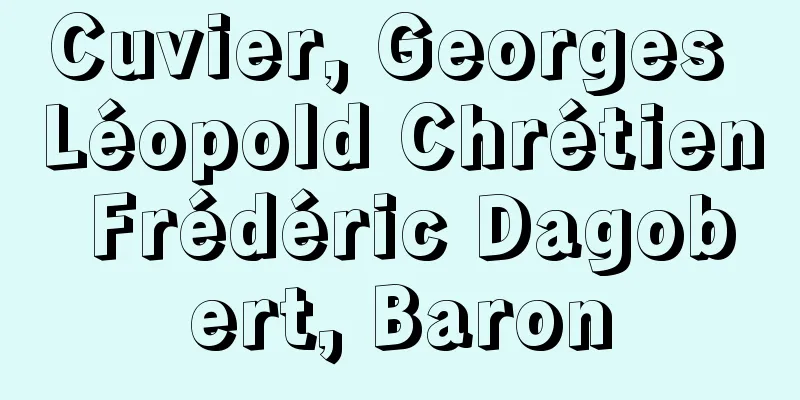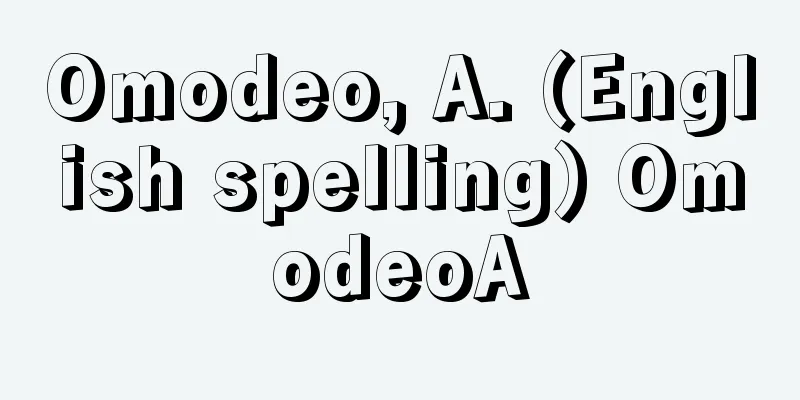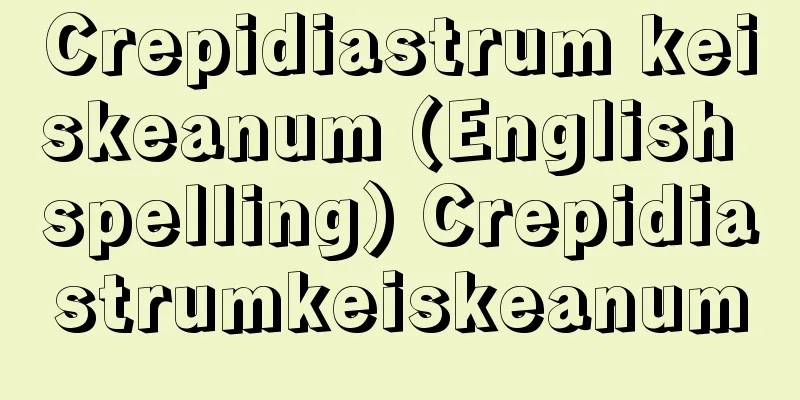Cuvier, Georges Léopold Chrétien Frédéric Dagobert, Baron

|
Born: August 23, 1769, Montbéliard Died: May 13, 1832. French zoologist. He established the foundations of comparative morphology and paleontology as sciences. After studying law at the Stuttgart School of Law (1784-88), he studied marine animals (especially mollusks) while working as a private tutor for an aristocrat (1788-95). His work was recognized by E. Geoffrey Saint-Hilaire, who made him a member of the Natural History Museum in Paris (1895) and a professor of natural history at the Collège de France (1800). In his Leçons d'anatomie comparée (5 volumes, 1800-05), he clarified the principle of correlation (Cuvier's principle), which states that the body of an animal is a whole and that the organs that make it up are functionally correlated with each other, making it possible to reconstruct the morphology of past animals from fossils. He reconstructed fossils excavated from layers of various depths, and found that vertebrates different from modern animals once existed, and that the older the layer, the more different the animal fossils contained in it were from modern animals (12). Cuvier believed that species were immutable, so he did not consider these to be a sign of the evolution of animals, but explained that animals became extinct each time natural disasters occurred. He also attempted to classify animals, claiming that there were four independent structural types in the animal kingdom: vertebrates, arthrozoans, mollusks, and radiozoans, and he divided all animal species, including modern animals and reconstructed fossil animals, into these four groups. Geoffrey Saint-Hilaire responded by expressing the view that there was a type common to all animals, and a debate ensued between the two (30). His academic style, which valued empirical evidence, was welcomed by the French intellectual community of the time, and he became secretary of the Academie des Sciences (03), wielded great influence in academia, and even refuted J. Lamarck's evolutionary ideas. His discoveries later became important sources of information for C. Darwin when he formulated his theory of evolution. He was also highly valued by Napoleon I, and was involved in educational administration. Source: Encyclopaedia Britannica Concise Encyclopedia About Encyclopaedia Britannica Concise Encyclopedia Information |
|
[生]1769.8.23. モンベリアール [没]1832.5.13. パリ フランスの動物学者。科学としての比較形態学および古生物学の基礎を確立した。ドイツのシュツットガルトの「カルル学院」で法律学を修めた (1784~88) のち,貴族の家庭教師をしながら海産動物 (特に軟体動物) を研究 (88~95) 。その成果が E.ジョフロア・サン=ティレールに認められてパリの自然史博物館館員 (95) ,コレージュ・ド・フランスの博物学教授 (1800) となった。彼は,『比較解剖学講義』 Leçons d'anatomie comparée (全5巻,1800~05) で,動物の体はまとまって全体をなしていて,それを構成するそれぞれの器官は機能的に互いに相関し合っているという相関の原則 (キュビエの原則) を明らかにして,化石をもとにして過去の動物の形態を復元することを可能にした。彼はさまざまな深さの地層から掘出した化石の復元作業を行なって,現生の動物とは異なる脊椎動物がかつて存在したこと,地層とそこに含まれる化石の種類との間に対応関係があるのを認めて地層が古いほど現生の動物との差異の大きな動物化石を含むことを明らかにした (12) 。キュビエは種を不変と考えていたので,これを動物の進化してきた跡を示すものとは考えず,天変地異が繰返されてそのたびに動物は絶滅したと説明した。また動物の分類を試み,動物界には互いに独立な4つの構造上の型,すなわち脊椎動物,関節動物,軟体動物,放射動物が存在すると主張して,現生動物に復元された化石動物を加えた全動物種をこれら4群に分類した。これに対して,ジョフロア・サン=ティレールは,すべての動物に共通な型が存在するとの見解を示して,両者間で論争が展開された (30) 。実証を重んじる彼の学風は当時のフランス知識社会に歓迎され,科学アカデミー書記官となり (03) ,学界で権勢をふるい,J.ラマルクの進化思想にも反論した。彼の行なった諸発見は,後年の C.ダーウィンの進化論形成の際に重要な資料となった。また彼はナポレオン1世に重用されて,教育行政にもたずさわった。 出典 ブリタニカ国際大百科事典 小項目事典ブリタニカ国際大百科事典 小項目事典について 情報 |
<<: Cubism - cubisme (English spelling) French
>>: Kewpie - Kyu-Pi (English spelling) cupie
Recommend
Beacon Hill
… In the old town area, narrow, winding roads and...
Kurukshetra (English spelling)
A Hindu pilgrimage site in the eastern part of Har...
Wealden type flora
...A general term for fossil plants found in the ...
Jungmann, J.
…Izmail Ivanovich Sreznevskii (1812-80), author o...
Liparidae
…They are sometimes caught in bottom trawls, but ...
domus religiosa (English spelling) domusreligiosa
...A place where Christian monks and nuns live to...
Trebowxia
…The zoospores break the cell wall and swim out. ...
Maudslay, AP (English spelling) MaudslayAP
…In archaeology, research on artifacts and remain...
braco
…They are used by both men and women, and have a ...
Aubrietia
...A cold-tolerant perennial plant of the Brassic...
Raja - rāja (English spelling)
It means "king" in Indian languages i...
Causalgie (English spelling) (German) Kausalgie
Scorching Hot Heat Ouch. Peripheral Mashou Severe...
feeding habit
…These are also called carnivorous, herbivorous, ...
Bengali - Bengalgo (English spelling) Bengali
It is one of the Aryan languages belonging to t...
Dione (English spelling)
Saturn's moon. Discovered by G. Cassini in 168...









